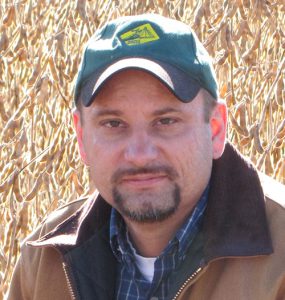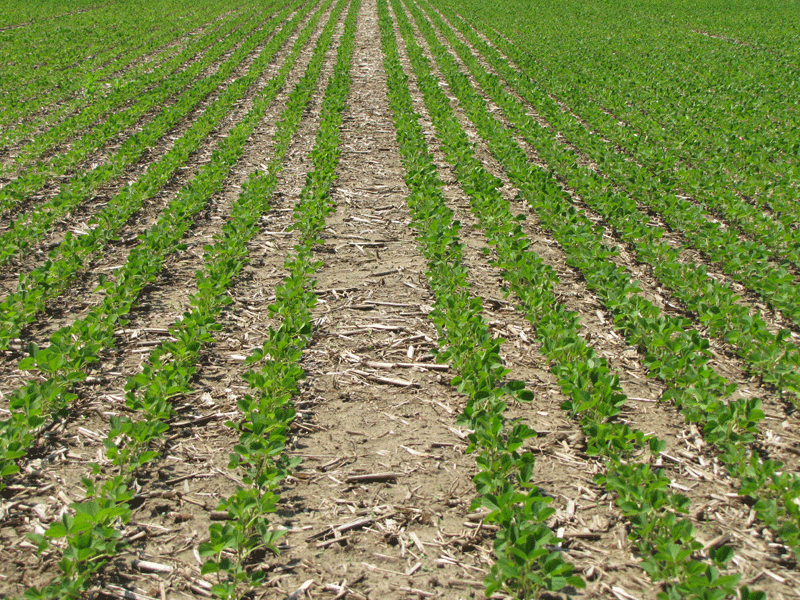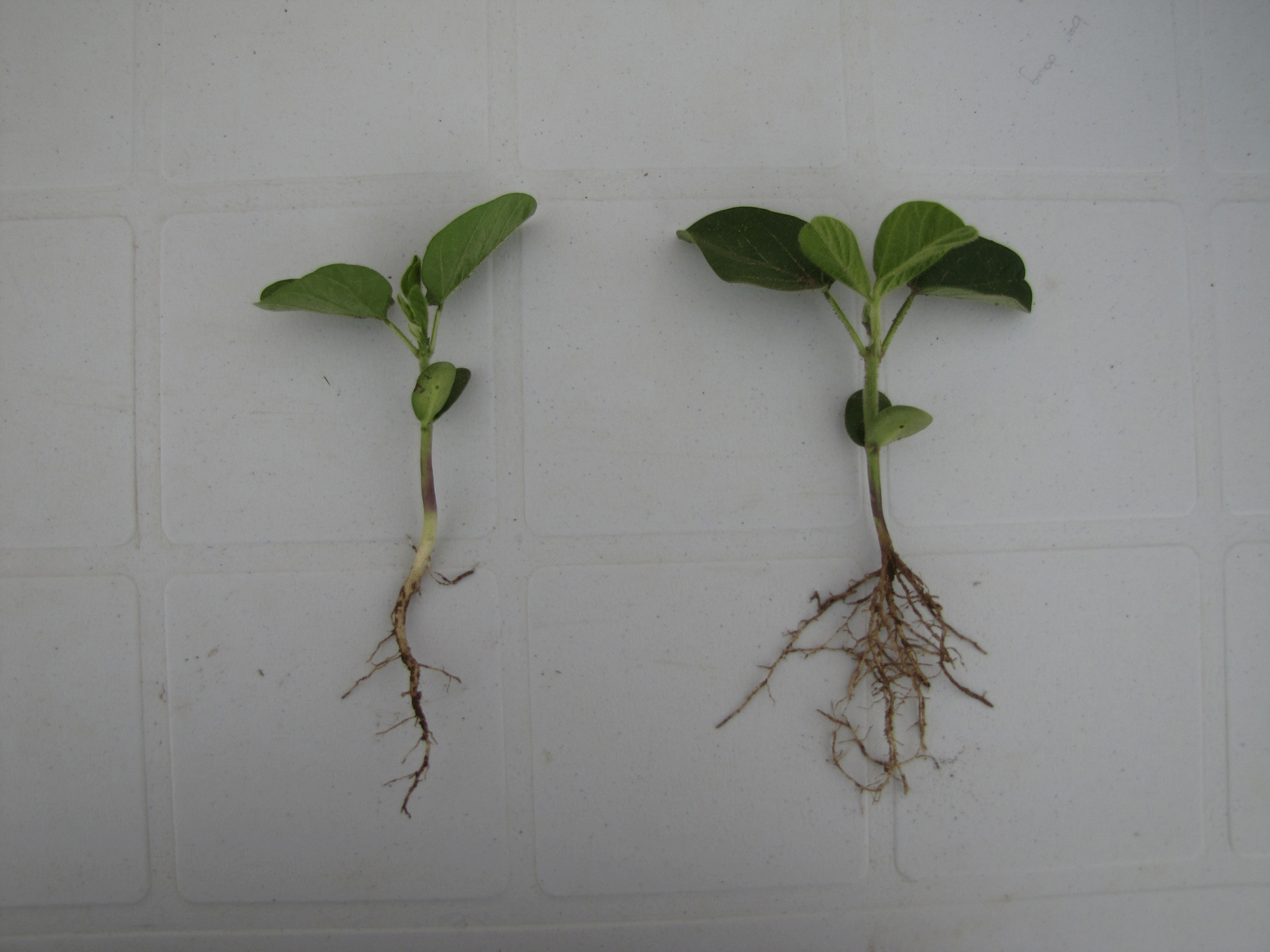Cropside: In furrow MAP with soybean seed
AGRONOMIC INFORMATION FROM ONTARIO'S CROP SPECIALISTS

SOIL TEST VALUES for Phosphorus (P) and Potassium (K) have been on the decline in Ontario as fertilizer prices increase and crop rotations include more corn and soybeans, which have high nutrient removals.
The typical way to apply fertilizer to a soybean crop has been to broadcast and incorporate it. This requires extra passes over the field. Many of the air seeders being used today have the ability to apply fertilizer in the seed trench as they are operating. This could potentially save a trip over the field. The additional benefit is that phosphorus is known to increase root proliferation, which could lead to higher yields. But current recommendations dictate: “do not apply fertilizer in contact with soybean seeds, due to their sensitivity to fertilizer salts.”
An Ontario Ministry of Agriculture, Food and Rural Affairs (OMAFRA) study has just been completed to assess the effectiveness of applying 50 pounds of MAP (11-52-0) fertilizer in the furrow, with soybean seed. The reason MAP was used is because it is relatively safe compared to other products which include potassium. The study included 16 sites over four years, from 2009 to 2012. These locations had a range of soil tests, from low response sites (soil tests of 16P and 120K and greater) to high response sites (low soil tests). Stand counts were taken to assess stand losses from fertilizer burn, as well as yield.
| Average of 16 sites (2009-2012) |
Treatment | Difference | |
| Untreated | 50 lbs/ac MAP |
||
| Stand count (plants/acre) |
144,008 | 142,382 | -1,626 |
| 50.9 | 52.3 | 1.4 | |
Using 50 pounds of MAP with soybean seed in furrow with 15” rows proved to be a safe practice in this study. The stand loss was insignificant, on average, at roughly 1,600 plants per acre. The highest stand loss recorded during the study was 38,000 plants. Prolonged dry weather after planting seemed to cause the greatest burn.
PHOTO: UNTREATED SOYBEANS (LEFT) COMPARED TO SOYBEANS WITH 50 LBS MAP (RIGHT) PLACED IN FURROW AT PLANTING TIME

The yield gains for the added MAP was 1.4 bushels per acre, on average. Yield gains ranged from -1.1 bu/ac to 6.2 bu/ac when adding MAP in furrow. Application costs of MAP at 50 pounds/ac are about $17/acre. An average yield gain of 1.4 bu/ac at a selling price of $12/bu represents a gain of $17/acre. Therefore the application of 50 lbs/ac of MAP in furrow was a “break even” proposition. If soil test values were low, yield gains were greater.
Yield gains from added MAP fertilizer did not come only in locations with poor P soil test values. Placing MAP in the furrow also stimulates growth in root mass, which can help nutrient uptake. This might help to explain why yield gains have been reported in fields which have higher soil tests, especially in cold wet years.
PHOTO: UNTREATED (LEFT) SOYBEANS VERSUS 50 LBS OF MAP IN FURROW (RIGHT)

This study shows that placing MAP fertilizer in the furrow with soybean seed is a reasonably safe practice. It must be noted however that placing fertilizer with soybean seed can cause seed burn when the weather remains dry after planting or in sandy soils. Higher rates of MAP with seed should be avoided as the risk for seed burn increases. Some growers have reported lower yields when adding MAP in furrow, this is likely due to seed burn. This method of fertilizer application can save time and money in operations that have the necessary equipment. This practice is probably best suited for fields with low soil test values because the yield gains will likely outweigh possible stand reductions. Sandy soils are more prone to have fertilizer burn so no fertilizer should be placed in furrow in these fields. •






















